Ramanand Sagar's Ramayan: The Iconic Television Series that Enthralled Millions
Ramayan, the epic tale of Lord Rama, is one of the most cherished stories of Indian mythology. It has been retold countless times in various forms, but none have captured the hearts of audiences quite like the 1987 television series by Ramanand Sagar. The show was a massive success and continues to hold a special place in the hearts of people even today. In this article, we will take a closer look at the show and its creator and explore why it remains so popular.
Who is Ramanand Sagar?
Ramanand Sagar was a renowned Indian film and television director, producer, and writer. Born on 29 December 1917 in Lahore, Sagar started his career as a scriptwriter and assistant director in the Bombay film industry. He was a versatile writer and director, having worked on films of various genres, including social dramas, historicals, and mythological ones.
Sagar's television career began in the 1980s when he produced and directed a series of religious and mythological shows for Doordarshan, the state-owned television channel in India. Among his most significant contributions was the production and direction of Ramayan, the 78-episode television series based on the epic Ramayan.
Ramayan by Ramanand Sagar:
The Ramayan by Ramanand Sagar remains one of the most popular and beloved television series in Indian history. The show first aired in 1987 and quickly became a cultural phenomenon. The series was based on the Valmiki Ramayan and featured a star-studded cast, including Arun Govil as Lord Rama, Deepika Chikhalia as Sita, and Sunil Lahri as Laxman.
The Ramayan by Ramanand Sagar is celebrated for its stunning visuals, melodious soundtrack, and compelling performances. The series is also noted for its attention to detail, as it remained faithful to the original epic while also adding its own unique touches. It was shot on a grand scale with lavish sets, intricate costumes, and impressive special effects. The show was entertaining and taught valuable life lessons that continue to resonate with audiences even today.
Story of Ramayan
The Story of Ramayan is an ancient Indian epic that tells the tale of Lord Rama and his quest to rescue his wife Sita from the clutches of the demon king Ravana. The epic is said to be written by Sage Valmiki and is considered one of the most important works of ancient Indian literature.
The story begins with the birth of Rama, who is the seventh avatar of Lord Vishnu. Rama is born to King Dasharatha and his wife Kaushalya in Ayodhya, a city in the northern part of India. Rama grows up to be a virtuous prince and is loved by all his subjects. He marries Sita, the daughter of King Janaka of Mithila, in a grand ceremony.
However, their happiness is short-lived as Ravana, the demon king of Lanka, abducts Sita and takes her to his kingdom. Rama, along with his brother Lakshmana and the monkey-god Hanuman, sets out on a journey to rescue his beloved wife. Along the way, they face many obstacles, including battles with demons and other creatures.
Finally, after a long and arduous journey, Rama and his army reach Lanka and engage in a fierce battle with Ravana and his army. In the end, Rama kills Ravana with the help of his divine bow and arrow and rescues Sita. Rama, Sita, and Lakshmana return to Ayodhya, where they are welcomed by their subjects with great joy and celebration.
The story of Ramayan is not just a tale of adventure and heroism, but also a story of love, sacrifice, and morality. It teaches us about the importance of following the path of righteousness and standing up for what is right, even in the face of adversity. The epic has been adapted into many forms of media, including television shows, films, and even animated series, and continues to inspire people all over the world.
How Many Kand of Ramayan?
The Ramayana is divided into seven kands or books, each of which tells a specific part of the story of Lord Rama. The kands are:
Bal Kand: This book describes the birth and early life of Lord Rama, his marriage to Sita, and his exile to the forest.
Ayodhya Kand: This book tells the story of Rama's exile and his stay in the forest, as well as the abduction of Sita by Ravana.
Aranya Kand: This book describes Rama's life in the forest and his encounters with various demons and other creatures.
Kishkindha Kand: This book tells the story of Rama's friendship with the monkey-god Hanuman, and his battle with the demon king Vali.
Sundar Kand: This book focuses on Hanuman's journey to Lanka to find Sita and his encounters with various obstacles along the way.
Lanka Kand: This book describes Rama's battle with Ravana and the ultimate rescue of Sita.
Uttar Kand: This book tells the story of Rama's return to Ayodhya, his coronation as king, and the end of his earthly life.
Each kand of the Ramayana is an important part of the story and helps to convey the overall message of the epic. Together, they form a rich tapestry of ancient Indian literature that continues to inspire and influence people all over the world.
What is Role of Hanuman in Ramayan?
Hanuman is one of the most beloved characters in the Hindu epic, Ramayana. He plays a crucial role in helping Lord Rama rescue his wife, Sita, from the demon king Ravana. Hanuman is known for his devotion to Lord Rama and his incredible strength and intelligence.
In the Ramayana, Hanuman first appears in the Kishkindha Kand, where he befriends Lord Rama and helps him locate his wife, who has been abducted by Ravana. Hanuman jumps across the ocean to reach Lanka, where Sita is being held captive, and disguises himself as a Brahmin to enter the city undetected. He then meets Sita and assures her that Lord Rama will come to rescue her.
Hanuman's strength and intelligence are on full display in the Sundar Kand, where he is sent by Lord Rama to find Sita and bring her back. He encounters many obstacles along the way, including the demoness Surasa, who tries to stop him from crossing a body of water, and the demon king, Ravana's son, who tries to capture him. Hanuman uses his powers to overcome each challenge, ultimately finding Sita and bringing her the message of Lord Rama's impending rescue.
In the Lanka Kand, Hanuman plays a key role in the battle between Rama and Ravana. He sets fire to Ravana's palace using his tail and assists Rama and his army in defeating the demons.
Overall, Hanuman's unwavering devotion to Lord Rama, his incredible strength, and his intelligence makes him a central figure in the Ramayana. He is often seen as a symbol of devotion and selflessness, and his character continues to be revered and celebrated in Hindu culture to this day.
Actors of Ramandra Sagar Ramayan
Ramanand Sagar's Ramayan is a popular television series that was first broadcast in India in 1987. The series features a talented cast of actors who brought the characters of the epic story to life. Here are some of the main actors who played key roles in the series:
Arun Govil as Lord Rama: Arun Govil played the role of Lord Rama, the prince of Ayodhya and the central character of the story. His portrayal of the ideal man who always followed his duty and remained calm in the face of adversity was widely appreciated.
Deepika Chikhalia as Sita: Deepika Chikhalia played the role of Sita, Lord Rama's wife and the embodiment of loyalty and devotion. Her performance as the virtuous and brave princess who stood by her husband in all circumstances was widely admired.
Sunil Lahri as Lakshman: Sunil Lahri played the role of Lakshman, Lord Rama's younger brother and loyal companion. His portrayal of the fierce warrior who remained devoted to his brother and sister-in-law was widely appreciated.
Sanjay Jog as Bharata: Sanjay Jog played the role of Bharata, Lord Rama's younger brother who is forced to rule Ayodhya in his absence. His performance as the righteous and humble prince who always put his duty above personal desires was widely praised.
Dara Singh as Hanuman: Dara Singh played the role of Hanuman, the loyal and powerful monkey god who aided Lord Rama in his quest to rescue Sita from Ravana. His portrayal of the lovable and devoted servant of Lord Rama was widely loved by viewers.
These actors, along with many others, helped make Ramanand Sagar's Ramayan a beloved and iconic television series that continues to be watched and admired by audiences around the world.
What is the role of Dashratha and Ravan in Ramayan?
Dashratha and Ravana are two important characters in the epic story of Ramayana. Here's a brief overview of their roles in the story:
Dashratha: Dashratha was the king of Ayodhya and the father of Lord Rama. He had three other sons, Bharata, Lakshmana, and Shatrughna. Dashratha's decision to make Lord Rama his successor to the throne led to a chain of events that ultimately resulted in the defeat of Ravana and the triumph of good over evil.
Ravana: Ravana was the king of Lanka and the primary antagonist of the story. He was a powerful demon with ten heads and immense strength. Ravana kidnapped Sita, Lord Rama's wife, and took her to Lanka. This led to Lord Rama's journey to Lanka with the help of his army of monkeys and the ultimate battle between Rama and Ravana. Ravana's defeat symbolizes the victory of good over evil.
In summary, Dashratha's decision to make Lord Rama his successor sets the story in motion, while Ravana's actions as the primary antagonist drive the plot and lead to the ultimate victory of good over evil.
What is the role of Bharat, Sugrib, and Satrughan in Ramayan?
Bharat, Sugriva, and Shatrughna are important characters in the epic story of Ramayana. Here's a brief overview of their roles in the story:
Bharat: Bharat was the younger brother of Lord Rama and the son of King Dasharatha. After Rama was exiled from Ayodhya, Bharat refused to accept the throne and instead served Rama's sandals as a symbol of his brother's rightful rule. When Rama returned from his exile, Bharat joyfully returned the throne to him and served as his loyal brother.
Sugriva: Sugriva was the king of the Vanaras (a group of monkeys) and a loyal ally of Lord Rama. Sugriva helped Rama in his search for Sita and provided him with invaluable aid in his battle against Ravana. Sugriva also aided Rama in finding a way to cross the ocean to reach Lanka and played a pivotal role in the ultimate victory of good over evil.
Shatrughna: Shatrughna was the youngest brother of Lord Rama and the son of King Dasharatha. While Bharat served Rama during his exile, Shatrughna stayed behind in Ayodhya to protect it from any possible threats. When Rama returned from his exile, Shatrughna was reunited with his brothers and joined them in their battle against Ravana.
In summary, Bharat, Sugriva, and Shatrughna were all important allies of Lord Rama who provided him with support, aid, and protection throughout his journey to defeat Ravana and ultimately triumph over evil.
The role of Bibhishana in Ramayana
Bibhishana was an important character in the epic story of Ramayana. He was the younger brother of the demon king Ravana, and he played a significant role in the final battle between Rama and Ravana.
Bibhishana was known for his loyalty and righteousness, which set him apart from the rest of his family. He disagreed with Ravana's actions and beliefs, and he ultimately decided to switch sides and join Lord Rama's army. Bibhishana informed Rama about the secrets of Ravana's power and his weaknesses, which proved to be vital in Rama's battle against Ravana.
During the final battle between Rama and Ravana, Bibhishana fought alongside Rama and his army. He used his knowledge of Ravana's weaknesses to guide Rama and helped him to defeat Ravana. After Ravana's defeat, Bibhishana was crowned as the new king of Lanka, and he ruled justly and righteously.
The role of Bibhishana in Ramayana is significant as it portrays the importance of righteousness and loyalty. Bibhishana's decision to leave his own brother and join Rama's army showed his sense of duty towards the right path, which ultimately led him to success and honour.
What is Uttar Ramayan ?
Uttar Ramayan is the sequel to the Hindu epic, Ramayana. It tells the story of Lord Rama's reign as the king of Ayodhya and the events that unfold after his return from his 14-year exile and the defeat of the demon king Ravana.
The Uttar Ramayan is divided into three parts: the Bal Kand, the Ayodhya Kand, and the Aranya Kand. In the Bal Kand, Lord Rama and Sita return to Ayodhya and are crowned king and queen. They rule over the kingdom with justice and fairness, and the people of Ayodhya are happy and prosperous.
In the Ayodhya Kand, Lord Rama faces a crisis when a sage accuses Sita of infidelity during her time in Ravana's captivity. Despite Sita's protests of innocence, Lord Rama, bound by his duty as a king, orders her to leave the palace and seek refuge in the forest. Sita gives birth to twin sons, Luv and Kush, in the forest, and they are raised by the sage Valmiki.
why Sita Mata went inside Earth?
Why did Rama give the death sentence to Laxman?
In the Aranya Kand, Luv and Kush meet Lord Rama and are reunited with their mother. Lord Rama, recognizing their valour and strength, engages in a battle with them, which he eventually loses. Realizing that they are his own sons, Lord Rama is filled with joy and welcomes them back to Ayodhya. Sita, however, chooses to return to the earth, and Lord Rama rules the kingdom with the help of Luv and Kush.
The Uttar Ramayan is a continuation of the Ramayana and provides insight into Lord Rama's reign as a king and his relationship with his sons, Luv and Kush. It is a story of love, sacrifice, and duty, and like the Ramayana, has been passed down through generations and continues to be celebrated and revered in Hindu culture to this day.
Why is Ramayan by Ramanand Sagar so popular?
There are several reasons why Ramayan by Ramanand Sagar continues to be popular even today. One of the main reasons is the show's excellent storytelling. The series was able to bring the epic tale of Ramayan to life in a way that was both engaging and relatable. The characters were well-developed, and the actors' performances were exceptional, making the audience feel invested in the story.
Another reason for the show's popularity is its visual appeal. The series was shot on a grand scale and had impressive sets, intricate costumes, and stunning special effects that made it a visual treat for audiences. The show's music was also outstanding, with the iconic title track and other memorable songs that are still popular today.
Finally, the show's spiritual and cultural significance cannot be overlooked. The Ramayan by Ramanand Sagar taught valuable life lessons, such as the importance of righteousness, loyalty, and devotion, which continue to resonate with audiences even today. The series also helped popularize Hindu mythology and brought the stories and teachings of the epics to a wider audience.
What is the message of Ramayan?
The Ramayana is a revered Hindu epic that contains many important messages and teachings. One of the central messages of the Ramayana is the importance of fulfilling one's duty or dharma. Lord Rama, the hero of the story, is depicted as the ideal man who always acts in accordance with his dharma, or duty.
Another important message of the Ramayana is the value of love and relationships. Lord Rama's devotion to his wife, Sita, and his brother, Lakshmana, is an example of the deep bonds of love that exist within families. The story also highlights the importance of loyalty and devotion to one's friends and allies.
The Ramayana also teaches the importance of humility and self-control. Lord Rama, despite being an incarnation of the god Vishnu, always remains humble and in control of his emotions, even in the face of great adversity.
The epic also contains many moral lessons and teachings about the consequences of one's actions. For example, the story of Ravana, the demon king who abducts Sita, is a cautionary tale about the dangers of arrogance, pride, and greed.
Overall, the Ramayana teaches important values such as duty, love, loyalty, humility, self-control, and the consequences of one's actions. These messages continue to resonate with people of all ages and backgrounds, making the Ramayana a timeless epic that continues to be revered and celebrated in Hindu culture to this day.
Interesting facts about Ramanand Sagar's Ramayan
Ramanand Sagar's Ramayan was first aired on Doordarshan in 1987 and quickly became a cultural phenomenon in India.
The show starred Arun Govil as Lord Ram and Deepika Chikhalia as Sita. Both actors became household names in India and are still remembered for their iconic roles.
Ramayan was not only popular in India but also in countries like Nepal, Mauritius, and Fiji, where it was broadcasted in local languages.
The show was so popular that it brought the entire country to a standstill every Sunday morning when it was broadcasted. People would stop their work to watch the show.
The show's popularity led to a shortage of essential commodities, as people would rush to the markets before the show started, leading to the term "Ramayan Effect."
Ramanand Sagar spent more than 5 years researching and writing the script for the show. He drew from the original Valmiki Ramayana, Tulsidas' Ramcharitmanas, and other sources to create a comprehensive and authentic retelling of the story.
The show was shot on a modest budget, and the special effects were not sophisticated. However, it was the storytelling and the acting that made it a success.
Ramayan was not just a television show, but it was also a cultural phenomenon. It brought the people of India together and instilled values such as respect, honesty, and devotion in them.
Ramanand Sagar's Ramayan was so successful that it was re-aired in 2020 during the COVID-19 lockdown, and once again, it captured the hearts of the nation.
The success of Ramayan inspired other mythological shows, such as Mahabharat, which also became immensely popular.
Research Data About Ramayan
How many episodes are there in Ramanand Sagar Ramayan?
How much did Ramanand Sagar Ramayan cost?
What is the highest TRP of Ramayana?
Is Ramayana a true story?
Lord Rama is an important figure in Indonesian culture
How old is Ramayana in years?
Is Ramayan's movie coming?
In conclusion, the Ramayan by Ramanand Sagar is a timeless classic that continues to hold a special place in the hearts of people even today. The show's excellent storytelling, visual appeal, and spiritual and cultural significance make it an unforgettable experience that has stood the test of time. The legacy of Ramanand Sagar and his iconic adaptation of Ramayan will continue to inspire and entertain audiences for generations to come.
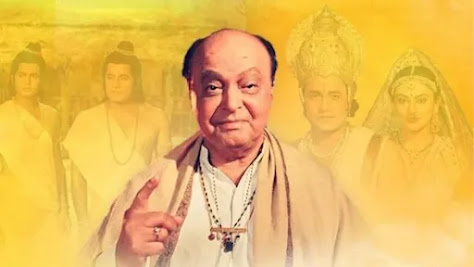
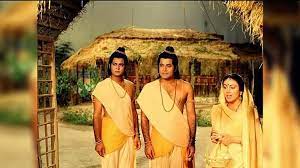

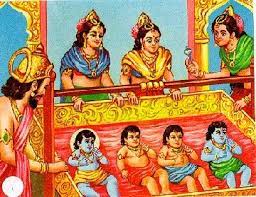


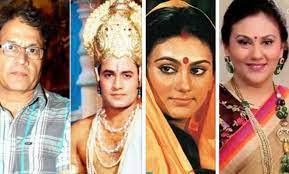






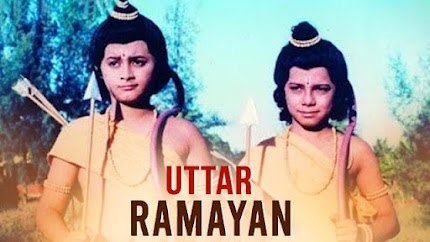






Comments